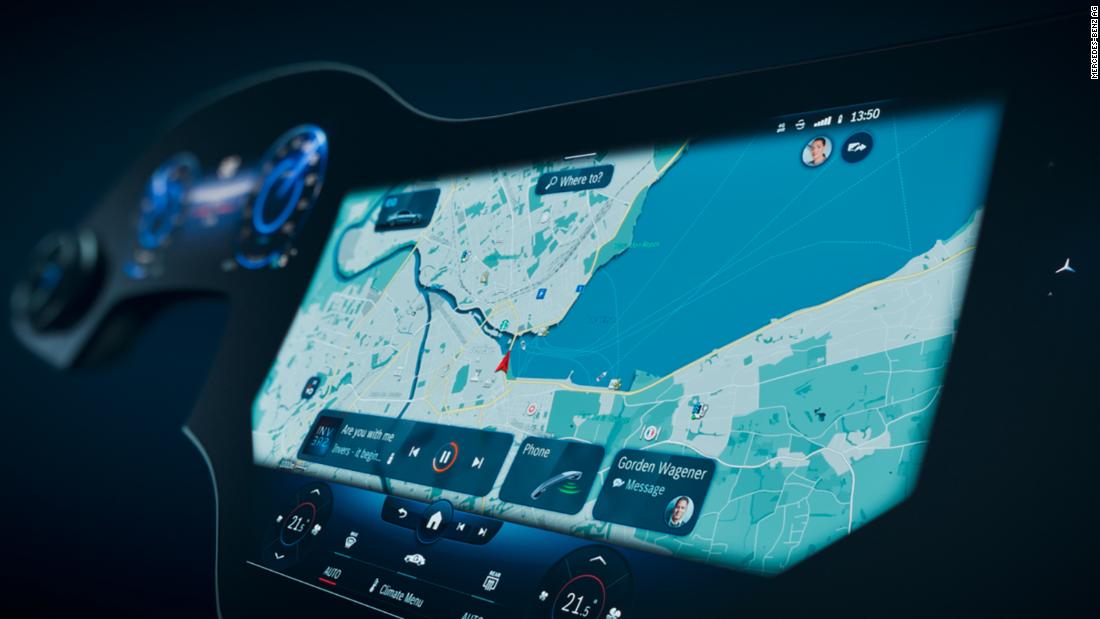Mercedes, however, took the trend to a whole new level.
Your new MBUX Hyperscreen covers almost the entire panel in front of the driver and passenger. It cannot even be measured diagonally because it is not a rectangle. It’s curved. The holes allow air vents to pass through. MBUX, which stands for Mercedes-Benz User Experience, is the name of Mercedes for the touchscreen software in their cars.
All that glass is not really a single interactive screen. There are three separate screens behind the large dark glass that gives the appearance of a single huge screen. One of the screens acts as the group of meters in front of the driver, one is in the usual central location within reach of the passenger and driver, and there is one more in front of the passenger’s seat.
The screen in front of the passenger seat will allow the occupant to select their own entertainment functions and, in countries where it is legal, watch videos using Bluetooth headsets. When no one is in the front passenger seat, the screen will show decorative designs.
The new screen system will be available on the Mercedes EQS, a large luxury electric sedan to be unveiled later this year.
Passengers in the back seat of the EQS will also have their own screens, and occupants will be able to “move” the content with their finger from one screen to another.
In addition to the screen itself, Mercedes said the car will have an artificial intelligence entertainment system to anticipate the needs and preferences of drivers and passengers. For example, if a driver usually requests a “Hot Stone Massage” function on massage seats in the afternoon on cold days, this option will be presented to the driver as soon as he gets in the car. Other options, such as destination, music options and different vehicle settings, will also be changed automatically based on things like local time, location and temperature.
In addition to selling cars with larger screens, Mercedes also projects that it will make money – more than $ 1 billion a year by 2025 – from software subscriptions and data for applications that will run on the screen, said Öla Källenius, president of Mercedes-Benz and its parent company, Daimler.
Mercedes conducted crash tests with the screen to ensure it is safe, said Källenius.
In the event of a collision, the glass sheet is designed with specific break points so that it does not shatter dangerously. The brackets that hold it to the panel are also designed to come off with a strong impact.
